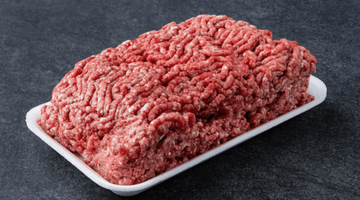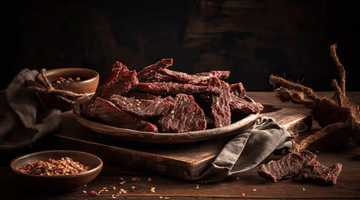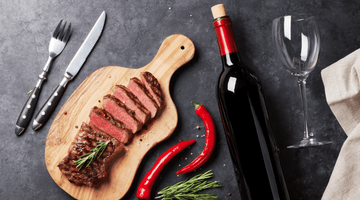
Freezing cooked meat is a practical and efficient way to preserve its freshness and flavor for future use. Whether you're preparing meals in advance, reducing food waste, or taking advantage of a sale at the grocery store, understanding the proper techniques for freezing cooked meat is essential.
In this comprehensive guide, we'll go through the reasons for freezing cooked meat, the types suitable for freezing, preparation steps, best practices, common mistakes to avoid, and conclude with some frequently asked questions.
Why Freeze Cooked Meat?
Freezing cooked meat offers several advantages, making it a popular practice among home cooks and busy individuals. It allows for convenient meal preparation, enabling you to cook in larger batches and store portions for later consumption.
Freezing can also extend the shelf life of cooked meat, preventing spoilage and reducing food waste. Moreover, freezing cooked meat can be a time-saving strategy, especially when dealing with busy schedules or unexpected events.
Types of Cooked Meat Suitable for Freezing
Before getting into the specifics of freezing, it's crucial to understand which types of cooked meat are suitable for this preservation method.
Chicken
Cooked chicken, whether grilled, roasted, or stewed, is excellent for freezing. However, it's essential to remove bones and excess fat before freezing to maintain optimal quality.
Beef
Beef, such as cooked ground beef, roasts, or steaks, freezes well. To ensure the best results, consider freezing beef in portioned quantities for easier meal planning.
Pork
Similar to beef, cooked pork, including chops, tenderloins, or pulled pork, can be successfully frozen. Remove any bones and store in suitable portions to facilitate thawing.
Fish
Cooked fish, whether baked, grilled, or poached, can be frozen with care. Ensure the fish is properly cooked before freezing and consider using vacuum-sealed bags for optimal preservation.
Proper Preparation Before Freezing
To maximize the quality of your frozen cooked meat, follow these essential preparation steps:
Cooling Cooked Meat to Room Temperature
Before freezing, allow the cooked meat to cool to room temperature. This prevents condensation inside the packaging, reducing the risk of freezer burn and maintaining the meat's texture.
Portioning for Convenience
Divide the cooked meat into portioned sizes suitable for your typical meals. This makes it easier to thaw only the amount you need, preventing unnecessary waste.
Choosing Appropriate Containers or Packaging
Select containers or packaging that are freezer-safe and airtight. This helps prevent freezer burn and maintains the flavor and texture of the cooked meat.
Best Practices for Freezing Cooked Meat
Ensuring the best quality when freezing cooked meat involves adopting these recommended practices:
Importance of Airtight Packaging
Use airtight packaging, such as vacuum-sealed bags or containers with tight-fitting lids, to minimize exposure to air. This helps prevent freezer burn and preserves the flavor and moisture of the meat.
Labeling with Date and Type of Meat
Clearly label each package with the date of freezing and the type of meat. This information helps you keep track of storage times and ensures you use the oldest frozen meat first.
Freezing in Flat Layers for Quick Thawing
Lay the meat flat in the freezer, especially for items like shredded chicken or ground meat. This allows for quicker and more even thawing when you're ready to use the frozen meat.
Common Mistakes to Avoid
To maintain the quality of your frozen cooked meat, avoid these common mistakes:
Overlooking Proper Packaging
Inadequate packaging can lead to freezer burn, affecting the taste and texture of the meat. Invest in quality freezer bags or containers to ensure optimal preservation.
Freezing Meat That Has Been Frozen Before
Re-freezing previously frozen cooked meat can compromise its quality. Plan your meals and portion sizes to avoid unnecessary thawing and refreezing.
Ignoring Recommended Storage Times
While freezing extends the shelf life of cooked meat, it doesn't last indefinitely. Be aware of recommended storage times to ensure the best quality when using frozen cooked meat.
Conclusion
Freezing cooked meat is a valuable skill for home cooks, offering convenience, flexibility, and the opportunity to minimize food waste. By following proper preparation steps, best practices, and avoiding common mistakes, you can ensure that your frozen cooked meat maintains its flavor and texture when thawed. Experiment with different types of cooked meat and freezing methods to find what works best for your culinary needs.
FAQs
-
Should I cool cooked meat before freezing?
Yes, it's advisable to cool cooked meat to room temperature before freezing. This prevents condensation inside the packaging and helps maintain the quality of the meat.
-
Can I freeze any type of cooked meat?
While many types of cooked meat can be frozen, proper preparation and packaging are crucial. Chicken, beef, pork, and fish are commonly frozen with success, but removing bones and excess fat is recommended.
-
What types of containers are best for freezing cooked meat?
Airtight containers, such as vacuum-sealed bags or containers with tight-fitting lids, are ideal for freezing cooked meat. These prevent exposure to air and help maintain the meat's flavor and texture.





Sou bariátrica recente, congelei pequenas porções pra ir usando conforme minha dieta permite.
Antes de congelar triturei no liquidificador.